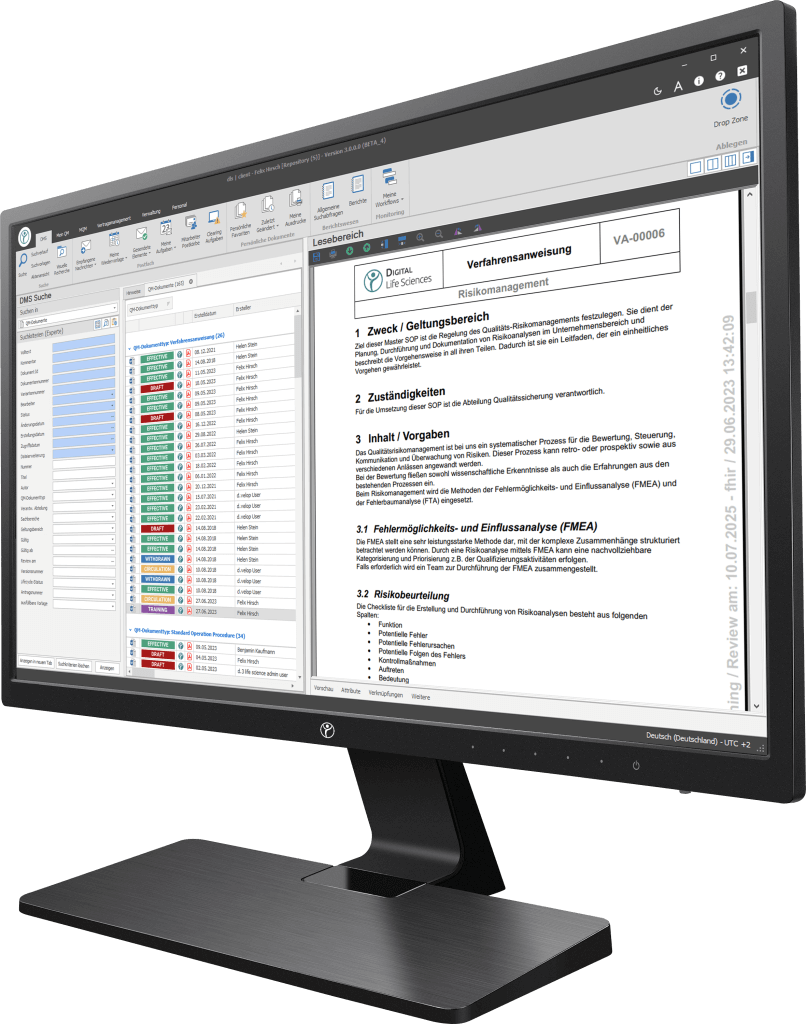Definition of the term (“What is a specification?”)
In the world of project management and software development, the user requirement specification (URS) plays a central role. This comprehensive document serves as the foundation upon which successful projects are built. The requirement specification, which is composed of the German word “Lasten” (requirements) and “Heft” (booklet), is essentially a booklet of requirements. It is an official document that records the specific needs, expectations, and features of a project or software to meet the user’s requirements. Consider it as a roadmap that guides the entire project team toward a common goal.
The significance of the specification sheet
- Ensuring clarity and consistency: One of the main goals of specifications is to eliminate ambiguity. Clearly defining the project scope, functionalities and constraints ensures that all stakeholders are on the same page. This clarity is critical to project success.
- Managing expectations: A specification helps manage user expectations. When customers and users have a clear understanding of what the project will deliver, it minimizes the likelihood of misunderstanding and disappointment along the way.
Components of a specification
- Introduction: The specification begins with an introduction that provides an overview of the purpose and scope of the document. It provides the framework for what follows.
- Project description: This section provides a detailed description of the project, including its background, objectives, and stakeholders.
- Functional requirements: This is the heart of the specification. It outlines the specific functionalities that the project or software must possess. Each requirement should be clearly defined and prioritized.
- Non-functional requirements: In addition to functionalities, non-functional aspects such as performance, security and scalability are also addressed here. These are critical to the user’s overall experience.
- Constraints: This section discusses any limitations or constraints that may impact the project, such as budget, time, or resources.
- Acceptance criteria: How is the project judged to be successful? Acceptance criteria are the measurable conditions that must be met for the project to be considered complete.
- Stakeholder Release: Before proceeding with the project, it is important to obtain formal approval from stakeholders confirming their agreement with the specifications.
Your path to digitization — Discover our software
Our digitization solutions primarily address document-based processes in manufacturing, production and quality management. The basis of the dls | eQMS is a holistic ECM/DMS system. The ECM/DMS system can be connected to your existing ERP system (e.g. SAP) and thus map almost all document-based processes in the company.

Design of an effective specification sheet
Below are some best practices to ensure effectiveness:
- Collaboration: Involve all relevant stakeholders, including end users, in the creation process. Their input is invaluable in setting accurate requirements.
- Clarity: Avoid jargon and use language that is easily understood by all stakeholders. The document should be crystal clear to avoid misinterpretation.
- Traceability: Ensure that every requirement can be traced back to its source, whether it is a user need or a regulatory requirement. This traceability helps with accountability.
- Prioritization: Prioritize requirements so that the most critical functionalities are addressed first. This is helpful when resources are limited or the project scope changes.
Conclusion
In the pane of project management and software development, a well-developed requirements specification (URS) is the key to success. It provides the much needed clarity, consistency and direction that a project requires to be successful. By following best practices and involving stakeholders, you can create a specification that not only meets but exceeds user expectations.
Start your digital transformation with our powerful, modular software solutions
Frequently Asked Questions (FAQs)
Are specifications only suitable for software projects?
No, specifications can be used in various project sections, including engineering, design and product development.
How detailed should the specifications be?
The level of detail depends on the complexity of the project. However, it is better to be too detailed than too vague.
What happens if the specifications are not met during the project?
Deviation from the specifications can lead to misunderstandings, project delays and increased costs. It is critical to adhere to the documented requirements.
Can the specifications be changed after they have been finalized?
Yes, but all changes should be documented, communicated to stakeholders, and approved through a formal change management process.
How are the specifications related to tenders and the functional specifications?
Within tenders, the contracting entity can send the specifications to several potential contractors, and subsequently a comparison can be made by means of the provided specification, in which the different solution paths of the providers are noted.
